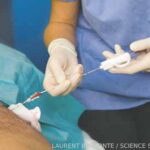Dr. Fava: No. This is precisely the dilemma we are trying to solve. Proteinuria is not a reliable marker of lupus nephritis activity, even though we all use it regularly in clinical practice. That’s because it can’t distinguish inflammation from damage.
You can think of the kidney’s filtration system like a piece of cheesecloth. In a healthy kidney, the cheese and proteins stay inside the kidney, and the water and minerals go through as the blood flows through the cheese cloth. However, in an injured kidney, the filter is broken—as if there are holes in the cheese cloth. You lose protein along with water and minerals. Proteinuria simply measures how injured the filtration system is, but it can be injured for a variety of reasons.
Lupus nephritis is caused by inflammation. When we treat lupus nephritis with immunosuppression, we want to assess whether inflammation is going down. Right now, we measure proteinuria, and we know it doesn’t truly represent inflammation. Repeat renal biopsy studies show that, if you have low proteinuria after treatment, 50–60% of these patients still have high histologic activity in the kidney, and the opposite is also true. Even if you achieve complete histologic remission on biopsy, up to 60% of patients still have proteinuria; so we are being fooled.
TR: Where does the liquid biopsy fit in? How does it help?
Dr. Fava: The liquid biopsy is being developed to predict whether or not [a patient has] active lupus nephritis. The true power of the liquid biopsy is in monitoring lupus nephritis over time. We presented data to this effect at a plenary session at ACR Convergence 2024.3
Repeat renal biopsies are incredibly informative in establishing true response and predicting long-term outcomes. But of course, these aren’t practical. Repeat renal biopsies come with the risk of complications, sample inadequacy, contraindications to the procedure (i.e., anticoagulation) and/or procedure anxiety for patients.
[You can] repeat a liquid biopsy as often as you like [e.g., every three months] to assess if your treatment is effective. This could be incredibly impactful. In the first three months, the liquid biopsy could tell us [if a patient] is going to be a treatment responder or not; so you could make early treatment changes for patients who aren’t getting better. For patients who are responding to treatment, the liquid biopsy could serve as evidence to support the continuation of the current management plan and steroid tapering.



